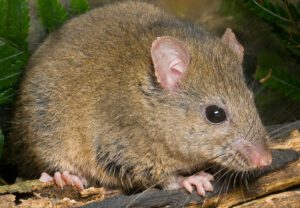Hva bør huseiere gjøre for tidlig å oppdage de vanlige tegnene på gnagerangrep? Hva gjør vi for å holde mus og rotter ute når temperaturen synker. Selv om skadedyraktiviteten til insekter normalt avtar i løpet av høsten og vinteren, må huseiere være på utkikk etter tegn på gnagere som mus og rotter, som kommer inn i hjemmene. Forebyggende tiltak er nødvendig for å unngå rotter og mus i hus og leiligheter.
Ta kontakt
Våre teknikere kan hjelpe med alle typer skadedyrproblemer.
Ta kontakt nå for en gratis samtale
Når været blir kaldere, søker rotter og mus ly i hjem. Fuktige og kalde forhold om høsten og vinteren driver gnagere inn i landet. Hvordan kan huseiere tidlig oppdage vanlige tegn på gnagerinfestasjon? Hva gjør vi for å holde mus og rotter ute når temperaturen synker?
Selv om skadedyrsaktiviteten av insekter normalt avtar i løpet av høsten og vinteren, må huseiere være på vakt for tegn på gnagere som mus og rotter, som da migrerer inn i hjem. Forebyggende tiltak er nødvendige for å unngå rotter og mus i hus og leiligheter. Gnagere kan spre farlige sykdommer, forurense mat, utløse allergisymptomer og til og med bringe lopper, flått og lus inn i hjem. Gnagere er også kjent for å skade hjem ved å tygge gjennom isolasjon, elektriske ledninger, vannrør og andre ting.
Her er seks vanlige tegn på problemer med gnagere:
Avfall: Å finne mus eller rotteavføring rundt hjemmet er et av de mest vanlige tegnene på gnagerinfestasjon. De etterlater ofte avføring på steder der mat lagres, som kjøkkenskap eller lagringsrom, samt under vasker, inne i pappkasser, langs lister og på toppen av vegg bjelker.
Gnagermerker: Gnagere kan forårsake alvorlig skade ved å tygge gjennom nesten hvilken som helst type materiale – inkludert plast og blyrør – for å få mat eller vann. Husmus og rotter er også kjent for å gnage på ledninger i vegger, noe som kan forårsake husbranner.
Reir: Gnagere foretrekker å bygge reir i mørke, avskilte områder der det er liten sjanse for forstyrrelse. Husmus, spesielt, liker å bygge reirene sine fra strimlet papirprodukter, bomull, emballasjematerialer, veggisolering og tekstiler. Hvis du ser disse materialene spredt rundt i hjemmet, kan det være et tegn på at gnagere er i nærheten.
Spor: Rotter har en tendens til å etterlate mørke fett- eller smussmerker langs vegger og gulvbord når de følger en sti gjennom hjemmet mellom reiret og maten. Hold øye med disse merkene, som faktisk er forårsaket av rottenes oljete pels.
Rare lyder: Å høre rare lyder i veggene, spesielt om natten, kan være litt bekymringsfullt. Sjansene er at disse lydene kan tilskrives en familie av gnagere som suser rundt i huset, mellom veggeneog oppe på loftet. Gnagere er spesielt glad i loft fordi de gir mørke, avskilte steder for å bygge reir.
En ekte gnager: Mus kan formere seg raskt, så hvis du ser en mus i huset, er det sannsynlig at det er flere der også. Faktisk kan en mus føde opptil 12 unger i kullet sitt og ha 8 kull i året. Det blir raskt mange mus.
For å forhindre at gnagere kommer inn, bør huseiere forsegle eventuelle strukturelle sprekker med en musebørste eller stålull, siden husmus kan komme inn gjennom åpninger så små som en krone. I tillegg, hold kjellere, loft og eksteriør rundt boligen ryddig og rent. Oppbevar ved noen meter unna huset og oppbevar mat i lufttette beholdere, og kast søppel regelmessig.
Hvis det er mistanke om gnagerangrep, ta kontakt med en godkjent skadedyrbekjemper for å håndtere situasjonen.





